Discover the profound connections between John Ruskin’s architectural philosophies and Freemasonry’s symbolic principles.
Brantwood, nestled on the eastern shore of Coniston Water in the Lake District, is a captivating mansion that served as Ruskin’s cherished home from 1871 until his passing in 1900.
Surrounded by the breathtaking beauty of the Lake District, Brantwood boasts an idyllic setting which profoundly influenced Ruskin’s later works, leading the natural world to become a central theme in his writing.
The gardens, designed by Ruskin, provide panoramic views of Coniston Water and the surrounding natural landscape.
The house itself, a blend of Gothic and vernacular architecture, offers visitors a glimpse into Ruskin’s world, with rooms adorned with his eclectic art collection, personal belongings, and an extensive library reflecting his wide-ranging interests.
John Ruskin was a prominent Victorian art critic, social thinker, and philanthropist known for his writings on art, architecture, and society, with his ideas leaving a profound impact on the fields of aesthetics and cultural criticism.
As an art critic, he advocated for a return to the detailed and naturalistic style of early Renaissance art, with the belief that art should serve as a moral force and contribute to social betterment.
He was also deeply engaged in social commentary, expressing concern regarding the negative effects of industrialization on society and championing the idea of a more just, equitable social order.
Whilst sitting in his personal library, perusing through his many works, one cannot help but notice similarities which weave between the ideas and writings of Ruskin and that of Freemasonry.
Both Masonic thought and that of Ruskin place value on set architectural principles, with the Five Classical Orders, and The Seven Lamps of architecture, respectively.
Although the specific number of principles and the details of their meanings may differ, the overarching connection lies in the utilisation of architecture as a medium for expressing particular symbolic, moral, and philosophical ideas.
In The Seven Lamps of Architecture, Ruskin explores the principles which he argued were the underpinning of great architecture. These lamps consist of: sacrifice, truth, power, beauty, life, memory, and obedience.
The Lamp of Sacrifice refers to the dedication of the craftsman’s skill to divine work, endorsing the idea that true architecture requires sacrifice and dedication, with the willingness of the architect to invest time and passion into his craft, along with prioritising the higher ideals of beauty and craftsmanship over personal gain.
The Lamp of Truth refers to the handcrafted and honest display of materials and structure, with materials remaining in their natural state. In this way “truthful” architecture reflects the integrity and sincerity of a structure’s purpose and material.
The Lamp of Power refers to the mental and physical effort taken on by the craftsman. Power in architecture also serves as an expression of strength and permanence, with a structure’s longevity contributing to aspects of society and culture.
The Lamp of Beauty refers to ornamentation and symbolism drawn from nature, with a harmonious arrangement of elements leading to the overall form and function of a building. In an architectural context, beauty can also be linked to moral and spiritual qualities.
The Lamp of Life refers to the enthusiasm and satisfaction freely expressed in craftsmanship, as well as a sense of vitality and organic quality of design, with architecture in harmony with the natural world that considers the needs of occupants that nurtures and enhances life.
The Lamp of Memory refers to respect for local culture and tradition, with the incorporation of historical tradition and cultural context into buildings which resonate with a collective social memory, as well as linking between generations.
The Lamp of Obedience refers to the omission of pointless innovation and rejection of frivolous design, instead opting to adhere to established principles and a disciplined approach which obeys laws of beauty and nature, committing to a higher moral order.
For Ruskin, these principles embody a vision of what architecture should be beyond simple aesthetic considerations, also taking into account ethical, social, and cultural factors.
Similarly, the Five Classical Orders have a deep symbolic significance in Freemasonry and architecture. The Doric, Ionic, and Corinthian orders serve as the principle classical orders and are associated with specific virtues and attributes.
The Doric order symbolises strength and stability, connoting a sturdy foundation of moral character. The Ionic order refers to wisdom and learning, tying in to the path of intellectual pursuit and knowledge so highly valued in Freemasonry.
The Corinthian Order refers to beauty and artistic refinement involved in architecture, reflecting the importance of aesthetics and culture, similarly to Ruskin’s Lamp of Memory.
The Tuscan order is known for its simplicity, echoing the basic tenets of Freemasonry and the importance of humility. The Composite order is a combination of the Ionic and Corinthian order, referring to humility and harmonious integration. Such symbolism present within these classical orders forms parallels between buildings and a moral framework for the individual.
Beyond initial surface appearances, many thematic connections and similarities can be found between the Five Classical Orders and Ruskin’s Seven Lamps of Architecture. Firstly, both contain moral values portrayed through symbolism, with the classical orders being used as symbolic representations of moral and philosophical principles associated with specific virtues important in Freemasonry.
Ruskin similarly explores the symbolic and moral dimensions of architecture, with the lamps representing principles which serve as aesthetic guidelines which give way to ethical and spiritual values.
Both ideas also pay strong attention to detail and craftsmanship. In Freemasonry, the meticulous application of the classical orders represent dedication to excellence, along with attention to detail. Likewise, Ruskin finds that true beauty in architecture is derived from skillful execution with the use of details and natural materials.
A sense of unity and harmony is also shared; in Ruskin’s approach harmony remains a central theme, with the idea that architecture should achieve a harmonious balance between various elements.
The classical orders also convey unity and harmony in their design, with each order’s place and purpose contributing to a structure’s overall aesthetic and structural coherence. In these ways, Ruskin’s Seven Lamps of Architecture and Freemasonry’s Five Classical Orders view architecture as more than just a physical structure, but as a reflection of human values, morals, and aspirations.
Parallels can also be generated between the significance of symbolism which is so greatly valued in Freemasonry as well as the writings of Ruskin.
Firstly, both tend to employ architectural symbolism with the Masonic square and compass symbolising morality and virtue and the pillars symbolising dual aspects of strength and beauty, in turn embodying Masonic ideals of balance and initiation into higher knowledge.
Ruskin uses symbols like Gothic arches and natural forms, or more specifically vegetative ornaments, in architecture to convey certain spiritual and moral ideas, using the built environment as a vehicle to do so.
The symbolism of light remains prevalent in Freemasonry, serving as a representation of knowledge, truth, and enlightenment, and is often involved in rituals, such as the Rite of Illumination, with the first three emblems of the Bible, Square, and Compasses particular to the ritual referred to as the Great Lights of Masonry.
Ruskin also has the tendency to touch upon similar themes of illumination and enlightenment prevalent in Victorian society during a period of heightened emphasis on knowledge, education, and progress reflected in philosophical and literary movements, as well as those more inclined to spirituality and morality.
This can be seen in The Seven Lamps of Architecture when Ruskin discusses the symbolic importance of stained-glass windows, considering the varied hues of light streaming through the stained glass a metaphor for divine illumination.
Freemasonry also makes ample use of nature symbolism, as does Ruskin. For example, the symbolism of the acacia tree is particularly emphasised in the third degree of Masonic initiation.
The evergreen nature of the acacia throughout the seasons is viewed as a symbol of immortality, with Masonic teaching alluding to the idea that, like the acacia tree, the soul is indestructible and endures beyond physical life.
The beehive is also used as a symbol of industry and cooperation in Freemasonry, representing the importance of individuals working together to achieve common goals, like bees in a hive. Cooperation and mutual support among Freemasons are viewed as essential for the success of both the lodge and broader community.
Ruskin’s usage of natural symbolism includes that of plant-forms in relation to their regenerative and life-affirming aspects of nature, with a continual cycle of growth and renewal. In particular, the intricate imagery of leaves and foliage, as well as trees representing strength and endurance.
The branching structure of the trees also serves as a metaphor for spiritual and moral development, values which are imperative to Freemasonry.
The scrutiny of John Ruskin’s ideas and the principles of Freemasonry show compelling similarities which transcend the boundaries of individual philosophy.
Through their shared emphasis on matters such as architectural principle, craftsmanship, and symbolism, both Ruskin and Freemasonry offer a nuanced understanding of morality, development, and brotherhood. Recognising these parallels not only manages to enrich one’s interpretation of Ruskin’s work, but also sheds light on the enduring values of Freemasonry.
By delving further into such connections, it is possible to gain a deeper appreciation of such an interplay of ideas in the cultural and historical tapestry of their time, which continues to persist onwards into the present day.

image description
IMAGE LINKED: wikimedia Attribution 4.0 International (CC BY 4.0)
John Ruskin – English Writer, Philosopher, Art Historian
(8 February 1819 – 20 January 1900)
John Ruskin, the influential English writer, art critic, and thinker of the Victorian era, is not widely documented as having been a Freemason. While Ruskin was deeply involved in many social, cultural, and educational reforms of his time and had a wide array of interests that intersected with those of some Freemasons, there is no concrete evidence or widely accepted documentation that he was a Freemason.
Freemasonry often attracted intellectuals, artists, and leaders interested in philosophical, social, and ethical issues, and it had a significant influence in various spheres during Ruskin’s lifetime. However, membership was typically recorded, and notable figures who were Freemasons are usually acknowledged as such in Masonic records or their own writings and biographies. In Ruskin’s case, despite the extensive analysis of his work and personal correspondence, there has been no clear indication that he was directly involved with Freemasonry.
His contributions to art criticism, social thought, and philanthropy were profound and shaped by his personal beliefs and Christian values, which he expressed openly in his lectures, writings, and social initiatives. These endeavours were aligned with the moral and ethical concerns that Freemasonry also addresses, but without direct links to the organization itself.
For a definitive stance on Ruskin’s relationship with Freemasonry, one would have to consult detailed biographies or studies specifically addressing this question, but based on available mainstream historical and biographical sources, John Ruskin is not recognized as having been a Freemason.
Article by: Devika Lishanin
Recent Articles: in people series
 Celebrate the extraordinary legacy of The Marquis de La Fayette with C.F. William Maurer's insightful exploration of Lafayette's 1824-25 tour of America. Discover how this revered leader and Freemason was honored by a young nation eager to showcase its growth and pay tribute to a hero of the American Revolution. |
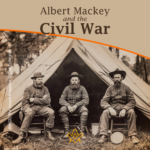 Albert Mackey and the Civil War In the midst of the Civil War's darkness, Dr. Albert G. Mackey, a devoted Freemason, shone a light of brotherhood and peace. Despite the nation's divide, Mackey tirelessly advocated for unity and compassion, embodying Freemasonry's highest ideals—fraternal love and mutual aid. His actions remind us that even in dire times, humanity's best qualities can prevail. |
 Discover the enduring bond of brotherhood at Lodge Dumfries Kilwinning No. 53, Scotland's oldest Masonic lodge with rich historical roots and cultural ties to poet Robert Burns. Experience rituals steeped in tradition, fostering unity and shared values, proving Freemasonry's timeless relevance in bridging cultural and global divides. Embrace the spirit of universal fraternity. |
 Discover the profound connections between John Ruskin's architectural philosophies and Freemasonry's symbolic principles. Delve into a world where craftsmanship, morality, and beauty intertwine, revealing timeless values that transcend individual ideas. Explore how these parallels enrich our understanding of cultural history, urging us to appreciate the deep impacts of architectural symbolism on society’s moral fabric. |
 Discover the incredible tale of the Taxil Hoax: a stunning testament to human gullibility. Unmasked by its mastermind, Leo Taxil, this elaborate scheme shook the world by fusing Freemasonry with diabolical plots, all crafted from lies. Dive into a story of deception that highlights our capacity for belief and the astonishing extents of our credulity. A reminder – question everything. |
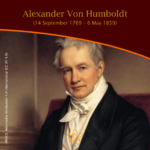 Dive into the extraordinary legacy of Alexander Von Humboldt, an intrepid explorer who defied boundaries to quench his insatiable thirst for knowledge. Embarking on a perilous five-year journey, Humboldt unveiled the Earth’s secrets, laying the foundation for modern conservationism. Discover his timeless impact on science and the spirit of exploration. |
 Voltaire - Freethinker and Freemason Discover the intriguing connection between the Enlightenment genius, Voltaire, and his association with Freemasonry in his final days. Unveil how his initiation into this secretive organization aligned with his lifelong pursuit of knowledge, civil liberties, and societal progress. Explore a captivating facet of Voltaire's remarkable legacy. |
 Robert Burns; But not as we know him A controversial subject but one that needs addressing. Robert Burns has not only been tarred with the presentism brush of being associated with slavery, but more scaldingly accused of being a rapist - a 'Weinstein sex pest' of his age. |
 Richard Parsons, 1st Earl of Rosse Discover the captivating story of Richard Parsons, 1st Earl of Rosse, the First Grand Master of Grand Lodge of Ireland, as we explore his rise to nobility, scandalous affiliations, and lasting legacy in 18th-century Irish history. Uncover the hidden secrets of this influential figure and delve into his intriguing associations and personal life. |
 James Gibbs St. Mary-Le-Strand Church Ricky Pound examines the mysterious carvings etched into the wall at St Mary-Le-Strand Church in the heart of London - are they just stonemasons' marks or a Freemason’s legacy? |
 Freemasonry and the Royal Family In the annals of British history, Freemasonry occupies a distinctive place. This centuries-old society, cloaked in symbolism and known for its masonic rituals, has intertwined with the British Royal Family in fascinating ways. The relationship between Freemasonry and the Royal Family is as complex as it is enduring, a melding of tradition, power, and mystery that continues to captivate the public imagination. |
 A Man Of High Ideals: Kenneth Wilson MA A biography of Kenneth Wilson, his life at Wellington College, and freemasonry in New Zealand by W. Bro Geoff Davies PGD and Rhys Davies |
 In 1786, intending to emigrate to Jamaica, Robert Burns wrote one of his finest poetical pieces – a poignant Farewell to Freemasonry that he wrote for his Brethren of St. James's Lodge, Tarbolton. |
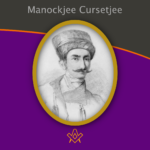 Alex Lishanin explores Mumbai and discovers the story of Lodge Rising Star of Western India and Manockjee Cursetjee – the first Indian to enter the Masonic Brotherhood of India. |
 Aleister Crowley - a very irregular Freemason Aleister Crowley, although made a Freemason in France, held a desire to be recognised as a 'regular' Freemason within the jurisdiction of UGLE – a goal that was never achieved. |
 Sir Joseph Banks – The botanical Freemason Banks was also the first Freemason to set foot in Australia, who was at the time, on a combined Royal Navy & Royal Society scientific expedition to the South Pacific Ocean on HMS Endeavour led by Captain James Cook. |
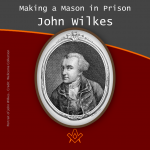 Making a Mason in Prison: the John Wilkes’ exception? |
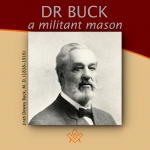 "To be a good man and true" is the first great lesson a man should learn, and over 40 years of being just that in example, Dr Buck won the right to lay down the precept. |
 Elias Ashmole: Masonic Hero or Scheming Chancer? The debate is on! Two eminent Masonic scholars go head to head: Yasha Beresiner proposes that Elias Ashmole was 'a Masonic hero', whereas Robert Lomas posits that Ashmole was a 'scheming chancer'. |
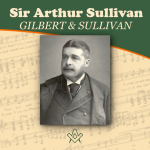 Sir Arthur Sullivan - A Masonic Composer We are all familiar with the comic operas of Gilbert and Sullivan, but did you know Sullivan was a Freemason, lets find out more…. |
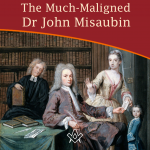 The Much-Maligned Dr John Misaubin The reputation of the Huguenot Freemason, has been buffeted by waves of criticism for the best part of three hundred years. |
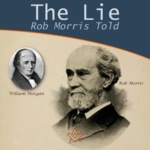 Was William Morgan really murdered by Masons in 1826? And what was the lie Masonic author Rob Morris told? Find out more in the intriguing story of 'The Morgan Affair'. |
 Lived Respected - Died Regretted Lived Respected - Died Regretted: a tribute to HRH The Prince Philip, Duke of Edinburgh |
 Who was Moses Jacob Ezekiel, a Freemason, American Civil War Soldier, renowned sculptor ? |
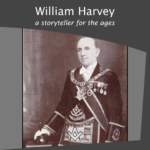 A Masonic author and Provincial Grand Master of Forfarshire in Scotland |
 Who was Philip, Duke of Wharton and was he Freemasonry’s Loose Cannon Ball ? |
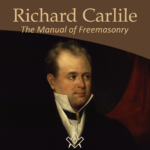 Richard Carlile - The Manual of Freemasonry Will the real author behind The Manual of Freemasonry please stand up! |
 Nicholas Hawksmoor – the ‘Devil’s Architect’ Nicholas Hawksmoor was one of the 18th century’s most prolific architects |
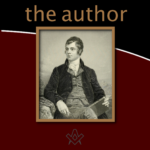 By Bro. Anthony Oneal Haye (1838-1877), Past Poet Laureate, Lodge Canongate Kilwinning No. 2, Edinburgh. |
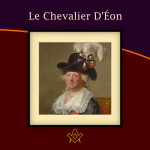 The Curious Case of the Chevalier d’Éon A cross-dressing author, diplomat, soldier and spy, the Le Chevalier D'Éon, a man who passed as a woman, became a legend in his own lifetime. |
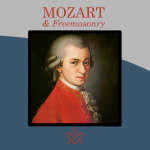 Mozart Freemasonry and The Magic Flute. Rev'd Dr Peter Mullen provides a historical view on the interesting topics |
masonic knowledge
to be a better citizen of the world
share the square with two brothers

click image to open email app on mobile device






